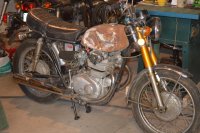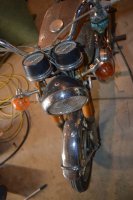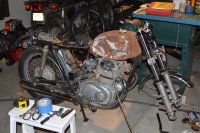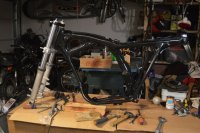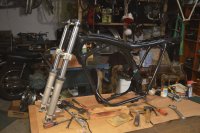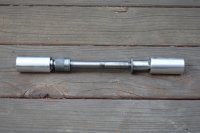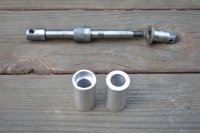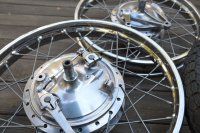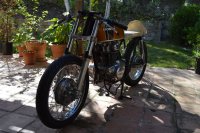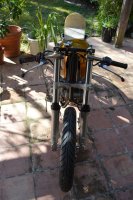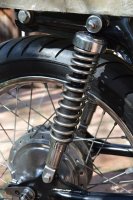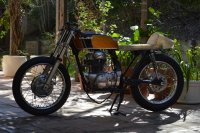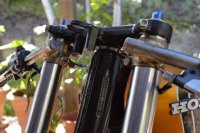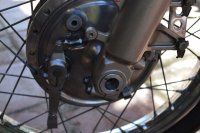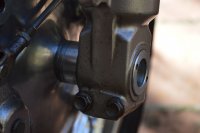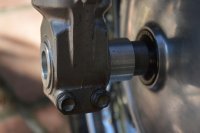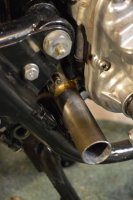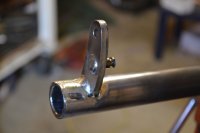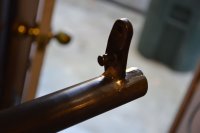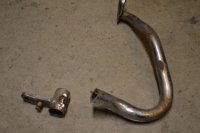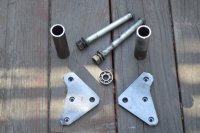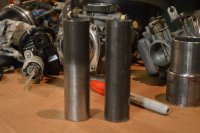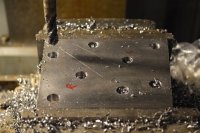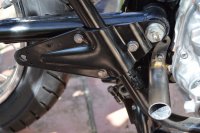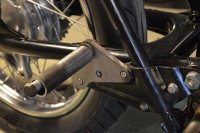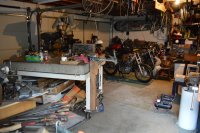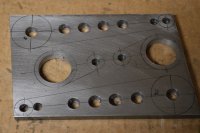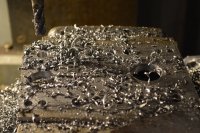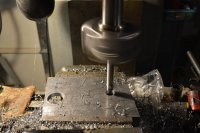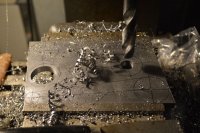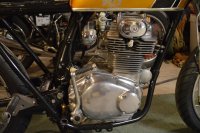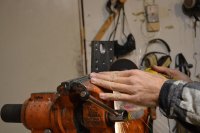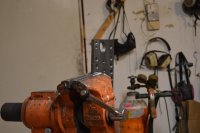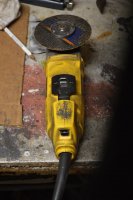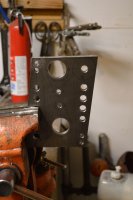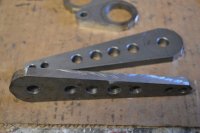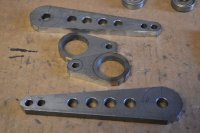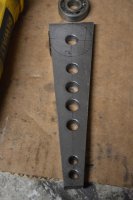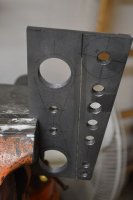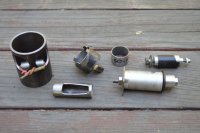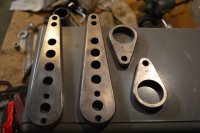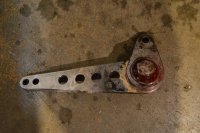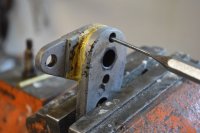halekai
Active Member
Hello Y'all,
I guess it is my turn to chronicle a build here at DTT. I'll try and be as helpfull a a newbie can be out of appreciation for how helpfull this site and everyone on it has been to builders everywhere.
last summer I was cruising CL and found a CB750 basket case for sale. I scooped it up spontaneously not really sure what I wanted to do with it. I ended up trading the motor for 1972 CB350 K4. After selling off the rest of the 750 stuff the CB350 was essentially free. Lucky thing because it was pretty beat up on inspection (I traded it over the phone sight unseen).
I dont think the old guy knew that his son had crashed the thing into a tree bending the forks all around and cracking the upper tree. The frame was straight so that saved me from the part out.
The first thing I did was get the bike running. The carbs were totally shot. Filled with aluminum oxide and a lot of the structure inside the float bowls was eaten away so that the jets did not even have anything to perch within. I located a decent set (traded for some of the 750 stuff) and after some fiddling she started right up. I did a compression test and both cylinders matched at 160 psi.
Here is a picture of what I started with...
I guess it is my turn to chronicle a build here at DTT. I'll try and be as helpfull a a newbie can be out of appreciation for how helpfull this site and everyone on it has been to builders everywhere.
last summer I was cruising CL and found a CB750 basket case for sale. I scooped it up spontaneously not really sure what I wanted to do with it. I ended up trading the motor for 1972 CB350 K4. After selling off the rest of the 750 stuff the CB350 was essentially free. Lucky thing because it was pretty beat up on inspection (I traded it over the phone sight unseen).
I dont think the old guy knew that his son had crashed the thing into a tree bending the forks all around and cracking the upper tree. The frame was straight so that saved me from the part out.
The first thing I did was get the bike running. The carbs were totally shot. Filled with aluminum oxide and a lot of the structure inside the float bowls was eaten away so that the jets did not even have anything to perch within. I located a decent set (traded for some of the 750 stuff) and after some fiddling she started right up. I did a compression test and both cylinders matched at 160 psi.
Here is a picture of what I started with...


